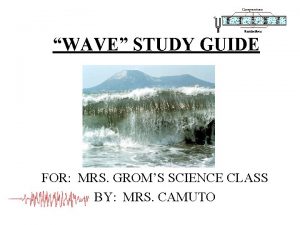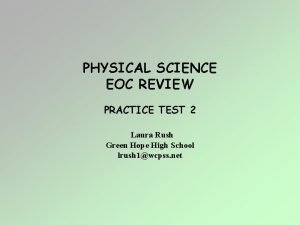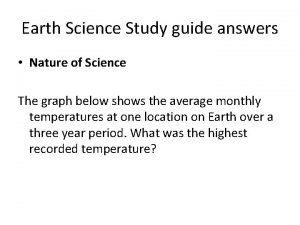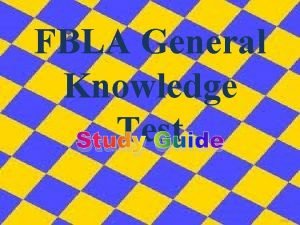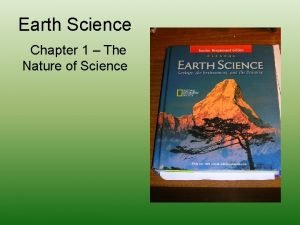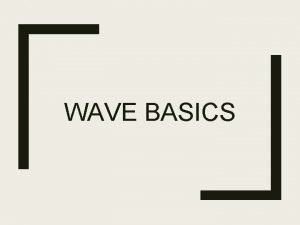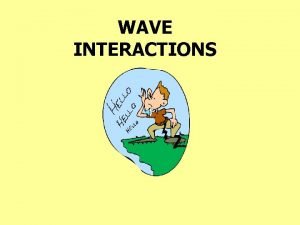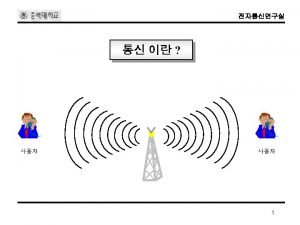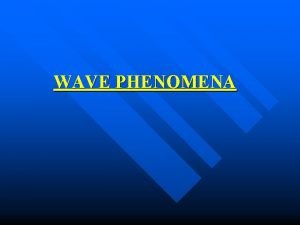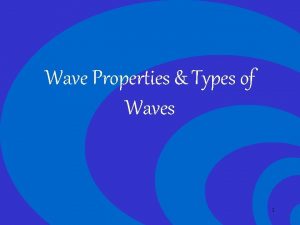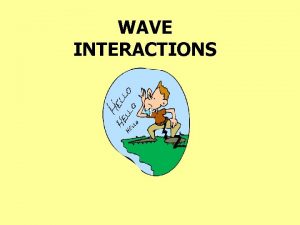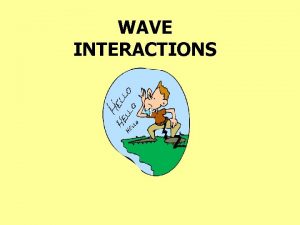WAVE STUDY GUIDE FOR MRS GROMS SCIENCE CLASS















- Slides: 15

“WAVE” STUDY GUIDE FOR: MRS. GROM’S SCIENCE CLASS BY: MRS. CAMUTO

THE TWO TYPES OF WAVES! • LONGITUDINAL TRANSVERSE 1. ) COMPRESSIONS – (close together) 1. ) CREST - (highest point) Represented by the coils of the spring being Represented by the coils of the spring where CROWDED TOGETHER. there is a MAXIMUM DISPLACEMENT UPWARD of the particles. 2. ) RAREFRACTION – (far apart) 2. ) TROUGH – (lowest point) Represented by the coils of the spring that Represented by the coils of the spring where are SPACED APART. there is a MAXIMUM DISPLACEMENT DOWNWARD of the particles.

TRANSVERSE WAVES CREST - highest point of a wave X In this type of wave, the MOTION of the WAVE and the DIRECTION of the wave are at RIGHT ANGLES. TROUGH - lowest point of a wave

PARTS OF THE LONGITUDINAL WAVE COMPRESSIONS – part of the wave where the particles are CLOSE (crowded) together. RAREFRACTIONS – part of the wave where the particles are SPACED APART.

WHAT IS A WAVE? Waves CAN BE transmitted through ALL PHASES OF MATTER (solid, liquid and gas) • A wave is - ANY DISTURBANCE that causes energy to travel from place to place. In other words, ALL WAVES TRANSFER ENERGY THROUGH A MEDIUM. • WAVES are created when a SOURCE OF ENERGY causes a MEDIUM to VIBRATE. • All waves, however, share certain basic characteristics: • ALL WAVES HAVE: 1. ) amplitude 2. ) wavelength 3. ) frequency. .

AMPLITUDE Amplitude • The maximum distance the medium (the material through which a wave travels) moves away from its rest position. The higher the wave moves up-and-down as it vibrates, the larger the amplitude of the resulting waves. • In simple terms, – AMPLITUDE IS THE HEIGHT OF THE WAVE! • Waves with high energy have a LARGE amplitude. • Waves with low energy have a SMALL amplitude.

WAVELENGTH! WAVELENGTH – The distance between two consecutive (one after another) SIMILAR points on a wave; in other words, ***a measurement from one crest or trough to the next on a wave is called the wavelength. The wavelength can be measured from any point on a wave as long as it is measured to the same point on the next wave. This is ONE wavelength These are measured in METERS.

FREQUENCY - the number of complete waves, or complete cycles, per unit of time Because every complete wave has one crest and one trough, you can think of the frequency as the number of crests or troughs produced per unit time. The unit used to measure wave frequency is called the hertz (Hz). HERTZ is the SAME as ONE WAVE PER SECOND!

WAVES NEED A MEDIUM! • MEDIUM – • the material through which a wave travels through – Remember: this medium will NOT move as a whole as the ENERGY is transmitted through it. • This includes ALL phases of MATTER. • TYPES OF MEDIUMS – -LAND -WATER -AIR

SOUND WAVES • A sound wave is different than a light wave in that a sound wave is not capable of traveling through a vacuum. (in other words, SOUND cannot travel through outer space. ) ****SOUND WAVES become PAINFUL at 120 decibels. Sound is a Mechanical Wave MECHANICAL WAVES MUST have a MEDIUM to travel / pass through.

ELECTROMAGNETIC WAVES • An electromagnetic wave is a wave which is capable of transmitting its energy through a vacuum (i. e. , empty space). • All light waves are examples of electromagnetic waves. • LIGHT can travel through outer space!

LIGHT WAVES Light waves can pass through many media: air, water, glass, to name a few. Light waves do not need any medium to travel. Sunlight, moonlight, and starlight pass through the vacuum of outer space to reach us.

REFRACTION • Refraction occurs when light passes into a transparent material. • An example of this is when a PENCIL SEEMS TO BEND when you place it in a glass of water!

REFLECTION • Reflection occurs when light bounces off an opaque material. • IN OTHER WORDS – The wave STRIKES the boundary and bounces back!

LAW OF REFLECTION C A B D • In this law the ANGLE OF INCIDENCE is EQUAL TO the ANGLE OF REFLECTION. C = the INCIDENT WAVE A = the ANGLE OF INCIDENT When a WAVE strikes a barrier, B = the ANGLE OF REFLECTION it can be ABSORBED or D = the REFLECTED WAVE REFLECTED.
 Wave study guide
Wave study guide They are mrs garcia and mrs castro
They are mrs garcia and mrs castro They are mrs garcia and mrs castro
They are mrs garcia and mrs castro Mrs. darling was ___________ of mrs. s.
Mrs. darling was ___________ of mrs. s. Noah carried a skateboard
Noah carried a skateboard Physical science eoc review
Physical science eoc review End of semester test environmental science a edmentum
End of semester test environmental science a edmentum Tmsca science study guide
Tmsca science study guide Nature of science study guide answer key
Nature of science study guide answer key Fbla parliamentary procedure study guide
Fbla parliamentary procedure study guide Chapter 1 the nature of science study guide answers
Chapter 1 the nature of science study guide answers My favorite subject is art
My favorite subject is art Longitudinal vs transverse wave
Longitudinal vs transverse wave Carbon dioxide temperature
Carbon dioxide temperature Difference between full wave and half wave rectifier
Difference between full wave and half wave rectifier Difference between transverse wave and longitudinal wave
Difference between transverse wave and longitudinal wave
